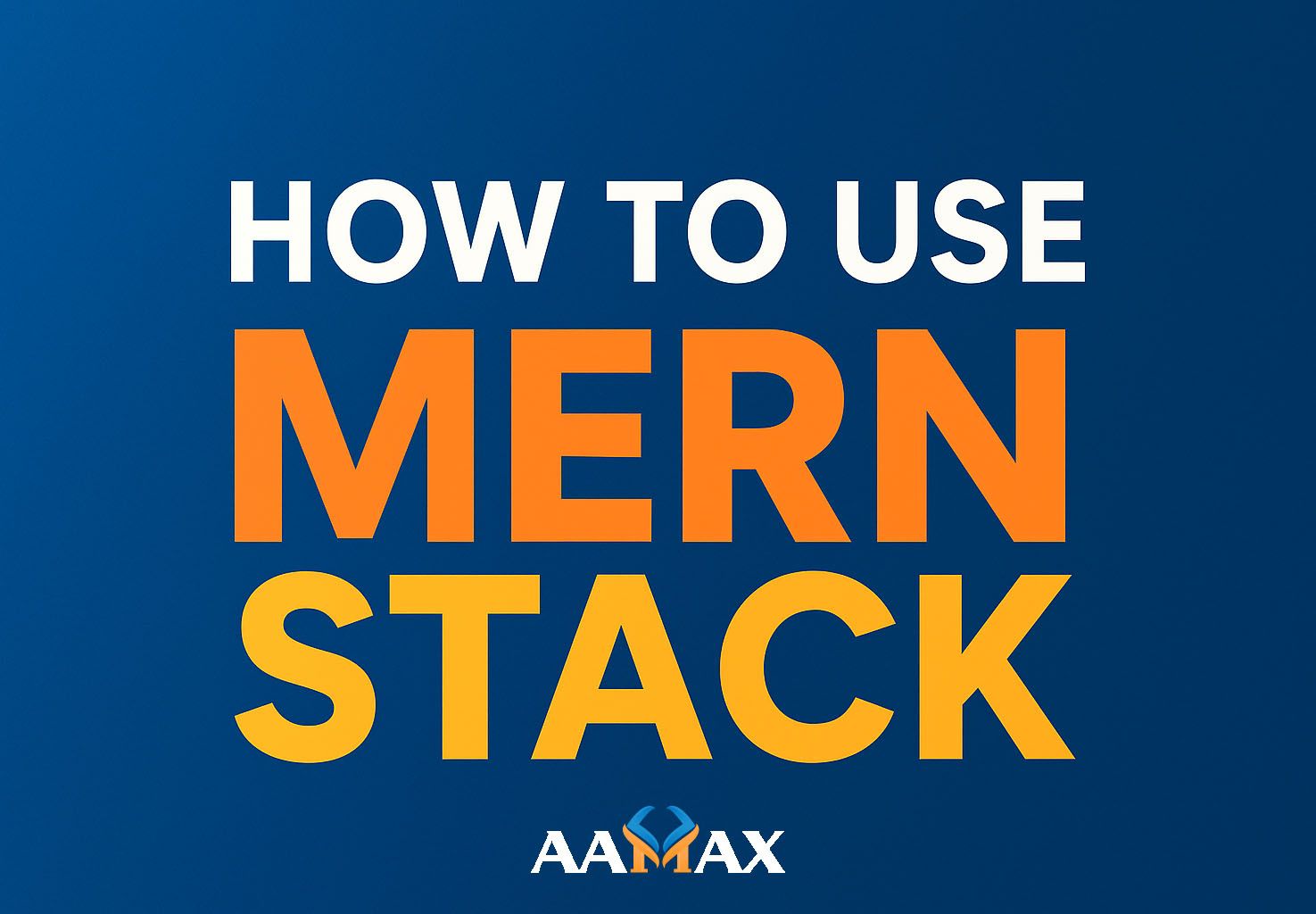
How To Use MERN Stack
The MERN stack is one of the most popular and powerful combinations for full-stack web development. It combines four modern technologies---MongoDB, Express.js, React, and Node.js---to create robust, scalable, and high-performing web applications. Whether you're building a small-scale app or an enterprise-level platform, the MERN stack provides a flexible foundation for front-end and back-end development.
In this guide, we'll explore how to use the MERN stack, how its components interact, and how you can set up, build, and deploy a MERN project from scratch.
What is the MERN Stack?
The term "MERN" is an acronym for four key technologies:
- MongoDB -- A NoSQL database that stores data in flexible, JSON-like documents.
- Express.js -- A lightweight framework for building web applications and APIs using Node.js.
- React.js -- A JavaScript library for creating interactive user interfaces.
- Node.js -- A JavaScript runtime environment that allows developers to run JavaScript on the server side.
These technologies work together seamlessly to form a full-stack JavaScript solution---meaning both client and server sides of the application use JavaScript.
Why Use the MERN Stack?
Before learning how to use MERN stack, it's important to understand why it's so widely adopted:
- Full JavaScript Stack -- You only need to know JavaScript to work on both front-end and back-end.
- Open Source -- All components of the MERN stack are open source, making it cost-effective and community-driven.
- High Performance -- Node.js's non-blocking architecture ensures scalability and speed.
- Reusable Components -- React encourages modular and reusable components, improving maintainability.
- JSON Everywhere -- From database to client, JSON is used across the stack for smooth data flow.
Setting Up Your MERN Stack Environment
Let's go step-by-step through setting up your environment to use the MERN stack.
Step 1: Install Node.js and npm
Download and install Node.js. Node automatically comes with npm (Node Package Manager). To verify installation, run:
node -v
npm -v
Step 2: Set Up Your Project Folder
Create a new directory for your project and initialize it with npm:
mkdir my-mern-app
cd my-mern-app
npm init -y
Step 3: Install Express and Dependencies
For the back-end, install Express and other useful packages:
npm install express mongoose cors dotenv
- express: Handles routing and server setup.
- mongoose: Manages MongoDB data with schemas.
- cors: Enables cross-origin requests between React and the backend.
- dotenv: Manages environment variables securely.
Step 4: Set Up MongoDB
You can use MongoDB Atlas (a cloud service) or install MongoDB locally. Connect it to your backend using Mongoose:
const mongoose = require('mongoose');
mongoose.connect(process.env.MONGO_URI)
.then(() => console.log('MongoDB Connected'))
.catch(err => console.error(err));
Step 5: Create a Basic Express Server
Create a file called server.js and set up a simple Express server:
const express = require('express');
const mongoose = require('mongoose');
const cors = require('cors');
require('dotenv').config();
const app = express();
app.use(cors());
app.use(express.json());
const PORT = process.env.PORT || 5000;
app.listen(PORT, () => console.log(`Server running on port ${PORT}`));
Now your backend is live and listening for requests!
Building the Front-End with React
React is responsible for the user interface in the MERN stack.
Step 1: Create the React App
In a separate folder (or in the same project directory), run:
npx create-react-app client
This creates a React app with a full front-end setup.
Step 2: Connect React to the Backend
To connect your React app to your Express backend, update the proxy
setting in your client/package.json:
"proxy": "http://localhost:5000"
This allows API calls from React to automatically forward to your backend.
Step 3: Create Components
Create React components such as Header, Footer, and Dashboard for
a modular structure. Example:
function Header() {
return <h1>Welcome to My MERN App</h1>;
}
export default Header;
Step 4: Use Axios for API Requests
Install Axios to make API calls to the backend:
npm install axios
Then use it in your React component:
import axios from 'axios';
useEffect(() => {
axios.get('/api/users')
.then(res => setUsers(res.data))
.catch(err => console.error(err));
}, []);
Structuring a MERN Application
A well-structured MERN app typically looks like this:
my-mern-app/
│
├── backend/
│ ├── models/
│ ├── routes/
│ ├── controllers/
│ └── server.js
│
├── client/
│ ├── src/
│ ├── public/
│ └── package.json
│
└── .env
This structure ensures separation of concerns---React handles the client, and Express manages the API and business logic.
Managing State in React
When learning how to use MERN stack, managing state is key to creating dynamic apps.
React provides several state management tools: - useState for local state - useContext for global state - Redux for larger, complex applications
Example with useState:
const [user, setUser] = useState(null);
This flexibility makes React a powerful front-end framework within the MERN ecosystem.
CRUD Operations with MERN Stack
CRUD stands for Create, Read, Update, and Delete---core operations in most apps.
Create Operation (POST)
app.post('/api/users', async (req, res) => {
const newUser = new User(req.body);
await newUser.save();
res.json(newUser);
});
Read Operation (GET)
app.get('/api/users', async (req, res) => {
const users = await User.find();
res.json(users);
});
Update Operation (PUT)
app.put('/api/users/:id', async (req, res) => {
const updatedUser = await User.findByIdAndUpdate(req.params.id, req.body, { new: true });
res.json(updatedUser);
});
Delete Operation (DELETE)
app.delete('/api/users/:id', async (req, res) => {
await User.findByIdAndDelete(req.params.id);
res.json({ message: 'User deleted' });
});
With these four endpoints, you've created a complete RESTful API that React can interact with!
Deploying a MERN Stack Application
After building your MERN stack app locally, it's time to deploy.
Step 1: Build the React App
Run the build command inside the client folder:
npm run build
Step 2: Serve the React Files from Express
In your Express server, add:
const path = require('path');
app.use(express.static(path.join(__dirname, 'client/build')));
app.get('*', (req, res) => {
res.sendFile(path.join(__dirname, 'client/build', 'index.html'));
});
Step 3: Deploy to a Hosting Platform
Use services like: - Render - Vercel - Heroku - AWS EC2
These platforms allow you to host both backend and frontend seamlessly.
Common Challenges When Using MERN Stack
- CORS errors: Usually caused by missing middleware configuration.
- Environment variable misconfiguration: Always use
.envfiles for security. - Build path issues during deployment: Ensure file paths match production directories.
- State management complexity: Consider Redux for larger apps.
Best Practices for MERN Stack Development
- Follow MVC architecture to maintain scalability.
- Validate all API inputs to prevent security issues.
- Use async/await for cleaner asynchronous code.
- Optimize MongoDB queries for performance.
- Keep UI modular and reusable in React.
Final Thoughts
Learning how to use the MERN stack effectively empowers developers to build full-stack applications entirely with JavaScript. Its unified ecosystem, scalability, and open-source flexibility make it ideal for startups and enterprises alike.
If you want to develop a custom MERN stack application for your business, you can AAMAX --- a full-service digital marketing company offering Web Development, Digital Marketing, and SEO services. Their team specializes in MERN stack development and can help you build powerful, user-focused digital solutions that drive results.







